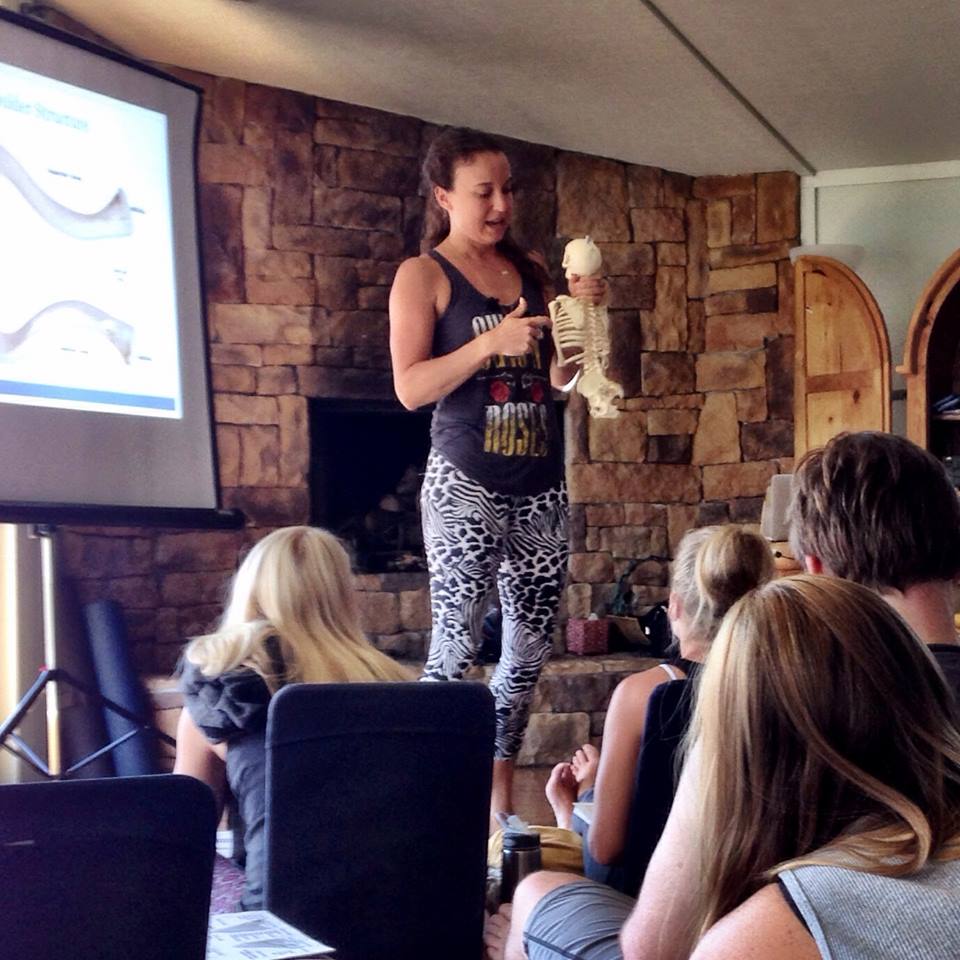Articles, Uncategorized, Yoga Medicine® News
Shoulder Injuries: Assessment & Treatment

By: Emilie Perz
I recently had the pleasure of attending and completing the first Yoga Medicine teacher training under its new name. The training took place nestled high in the beautiful hills of Napa Valley, CA at Mayacamas Ranch. As a part of the 500-hour curriculum, in-depth analysis of the shoulder allowed us to build on our understanding as Yoga Medicine teachers. This module increased our understanding of the girdle, its anatomy, musculoskeletal function and common injuries.
As a teacher, I’ve struggled to help clients with shoulder disabilities. As a result, I have often felt challenged to recommend appropriate postures that relieve pain and open the surrounding tissues that support the joint’s full range of motion.
A valuable component of this training was learning how to do a detailed professional intake and assessment of clients’ shoulders. Tiffany taught us active, passive and resisted range of motion tests. Using these tests allows us to spot abnormalities or weakness from side to side. Also, we were provided with an intake form to determine chief complaints and evaluate pain symptoms and severity. This allows us to formulate a comprehensive yoga prescription based on the information collected.
Our daily yoga practice deconstructed the kinesiology of the shoulder, allowing us to “test-drive” muscles as we moved. Later, we practiced manual palpation, allowing us to experience the muscles in motion. Combining this with anatomical models and descriptions, allowed for a holistic understanding of the area. This allowed us to better visualize the stabilization of the humeral head and scapulae. The content for this module was designed to give teachers a clear understanding of both the shoulder structure and mechanics, as well as how to assess shoulder range-of-motion in order to prescribe an appropriate yoga regimen.
Takeaways
[/fusion_title][fusion_text hide_pop_tinymce=””]In my opinion, the most important takeaway was learning how to perform a Passive Range of Motion (PROM) test. During this particular assessment, you will establish a therapeutic relationship with your clients and ask them to sit or lie down onto one side, completely relaxed. Then, you perform a number of shoulder motions to assess the function of the joint. After that, Tiffany taught us how to use point of contact to palpate muscles and tissues looking for tightness, inflammation and pain. This hands-on practice was key in helping me learn how to use touch and pressure to evaluate the shoulder. I can now confidently feel the bunching of tissues or the irregularity of certain bone structures. This has been useful in my treatment of myofascial release. As a result, I’ve seen how each individual body has it’s own unique, varying degrees of stiffness and flexibility.
After a few weeks back from this module I’m starting to feel the integration of what we learned. Almost all of my private clients have benefitted from my training, as I apply what I’ve learned. I gained a deeper understanding of the many different aspects of shoulder stability. Above all, I have increased my understanding of how daily wear and tear on the joint that can affect its overall mobility. More importantly, I gained confidence in pinpointing misalignments and learned new ways to treat and correct common shoulder conditions. This has been particularly useful in optimizing the range of motion on my athletic clients who have shoulder injuries but still actively participate in sports. As a result of my enriched depth of knowledge, I have noticed small breakthroughs already in the postures I’m recommending and the opening of the joint.
Emilie Perz is a Yoga Medicine Assistant
Click here for her bio http://yogamedicine.com/assistants/












